Early postnatal discharge from hospital for healthy mothers and term infants
- PMID: 34100558
- PMCID: PMC8185906
- DOI: 10.1002/14651858.CD002958.pub2
Early postnatal discharge from hospital for healthy mothers and term infants
Abstract
Background: Length of postnatal hospital stay has declined dramatically in the past 50 years. There is ongoing controversy about whether staying less time in hospital is harmful or beneficial. This is an update of a Cochrane Review first published in 2002, and previously updated in 2009.
Objectives: To assess the effects of a policy of early postnatal discharge from hospital for healthy mothers and term infants in terms of important maternal, infant and paternal health and related outcomes.
Search methods: We searched the Cochrane Pregnancy and Childbirth Group's Trials Register, ClinicalTrials.gov, the WHO International Clinical Trials Registry Platform (ICTRP) (21 May 2021) and the reference lists of retrieved articles.
Selection criteria: Randomised controlled trials comparing early discharge from hospital of healthy mothers and term infants (at least 37 weeks' gestation and greater than or equal to 2500 g), with the standard care in the respective settings in which trials were conducted. Trials using allocation methods that were not truly random (e.g. based on patient number or day of the week), trials with a cluster-randomisation design and trials published only in abstract form were also eligible for inclusion.
Data collection and analysis: Two review authors independently assessed trials for inclusion and risk of bias, extracted and checked data for accuracy, and assessed the certainty of evidence using the GRADE approach. We contacted authors of ongoing trials for additional information.
Main results: We identified 17 trials (involving 9409 women) that met our inclusion criteria. We did not identify any trials from low-income countries. There was substantial variation in the definition of 'early discharge', ranging from six hours to four to five days. The extent of antenatal preparation and midwifery home care offered to women following discharge in intervention and control groups also varied considerably among trials. Nine trials recruited and randomised women in pregnancy, seven trials randomised women following childbirth and one did not report whether randomisation took place before or after childbirth. Risk of bias was generally unclear in most domains due to insufficient reporting of trial methods. The certainty of evidence is moderate to low and the reasons for downgrading were high or unclear risk of bias, imprecision (low numbers of events or wide 95% confidence intervals (CI)), and inconsistency (heterogeneity in direction and size of effect). Infant outcomes Early discharge probably slightly increases the number of infants readmitted within 28 days for neonatal morbidity (including jaundice, dehydration, infections) (risk ratio (RR) 1.59, 95% CI 1.27 to 1.98; 6918 infants; 10 studies; moderate-certainty evidence). In the early discharge group, the risk of infant readmission was 69 per 1000 infants compared to 43 per 1000 infants in the standard care group. It is uncertain whether early discharge has any effect on the risk of infant mortality within 28 days (RR 0.39, 95% CI 0.04 to 3.74; 4882 infants; two studies; low-certainty evidence). Early postnatal discharge probably makes little to no difference in the number of infants having at least one unscheduled medical consultation or contact with health professionals within the first four weeks after birth (RR 0.88, 95% CI 0.67 to 1.16; 639 infants; four studies; moderate-certainty evidence). Maternal outcomes Early discharge probably results in little to no difference in women readmitted within six weeks postpartum for complications related to childbirth (RR 1.12, 95% CI 0.82 to 1.54; 6992 women; 11 studies; moderate-certainty evidence) but the wide 95% CI indicates the possibility that the true effect is either an increase or a reduction in risk. Similarly, early discharge may result in little to no difference in the risk of depression within six months postpartum (RR 0.80, 95% CI 0.46 to 1.42; 4333 women; five studies; low-certainty evidence) but the wide 95% CI suggests the possibility that the true effect is either an increase or a reduction in risk. Early discharge probably results in little to no difference in women breastfeeding at six weeks postpartum (RR 1.04, 95% CI 0.96 to 1.13; 7156 women; 10 studies; moderate-certainty evidence) or in the number of women having at least one unscheduled medical consultation or contact with health professionals (RR 0.72, 95% CI 0.43 to 1.20; 464 women; two studies; moderate-certainty evidence). Maternal mortality within six weeks postpartum was not reported in any of the studies. Costs Early discharge may slightly reduce the costs of hospital care in the period immediately following the birth up to the time of discharge (low-certainty evidence; data not pooled) but it may result in little to no difference in costs of postnatal care following discharge from hospital, in the period up to six weeks after the birth (low-certainty evidence; data not pooled).
Authors' conclusions: The definition of 'early discharge' varied considerably among trials, which made interpretation of results challenging. Early discharge probably leads to a higher risk of infant readmission within 28 days of birth, but probably makes little to no difference to the risk of maternal readmission within six weeks postpartum. We are uncertain if early discharge has any effect on the risk of infant or maternal mortality. With regard to maternal depression, breastfeeding, the number of contacts with health professionals, and costs of care, there may be little to no difference between early discharge and standard discharge but further trials measuring these outcomes are needed in order to enhance the level of certainty of the evidence. Large well-designed trials of early discharge policies, incorporating process evaluation and using standardized approaches to outcome assessment, are needed to assess the uptake of co-interventions. Since none of the evidence presented here comes from low-income countries, where infant and maternal mortality may be higher, it is important to conduct future trials in low-income settings.
Trial registration: ClinicalTrials.gov NCT02911727.
Copyright © 2021 The Cochrane Collaboration. Published by John Wiley & Sons, Ltd.
Conflict of interest statement
Stephanie Brown: salary and project support from the Australian National Health and Medical Research Council.
Peter G Davis: salary and project support from the Australian National Health and Medical Research Council.
Beck Taylor: is supported by the UK National Institute for Health Research (NIHR) Applied Research Centre (ARC) West Midlands. The views expressed are those of the author(s) and not necessarily those of the NIHR or the Department of Health and Social Care.
Fiona Stewart: none known
Eleanor Jones: is supported by the National Institute for Health Research (NIHR). The views expressed are those of the author(s) and not necessarily those of the NIHR or the Department of Health and Social Care.
Figures
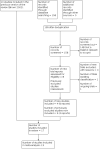
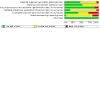
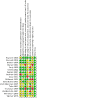
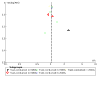

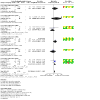
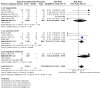
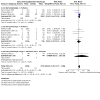
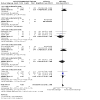

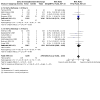
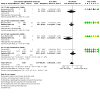
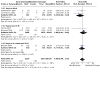
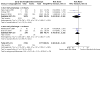
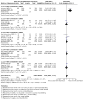
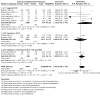
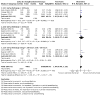


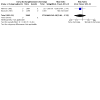
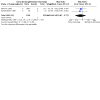
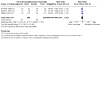
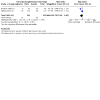

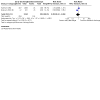
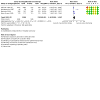



Update of
-
Early postnatal discharge from hospital for healthy mothers and term infants.Cochrane Database Syst Rev. 2002;(3):CD002958. doi: 10.1002/14651858.CD002958. Cochrane Database Syst Rev. 2002. Update in: Cochrane Database Syst Rev. 2021 Jun 8;6:CD002958. doi: 10.1002/14651858.CD002958.pub2. PMID: 12137666 Updated.
References
References to studies included in this review
Bayoumi 2016 {published data only}
-
- Bayoumi YA, Bassiouny YA, Hassan AA, Gouda HM, Zaki SS, Abdelrazek AA. Is there a difference in the maternal and neonatal outcomes between patients discharged after 24 h versus 72 h following cesarean section? A prospective randomized observational study on 2998 patients. Journal of Maternal-Fetal & Neonatal Medicine 2016;29(8):1339-43. - PubMed
Boulvain 2004 {published data only}
-
- Boulvain M, Perneger TV, Othenin-Girard V, Petrou S, Berner M, Irion O. Home-based versus hospital-based postnatal care: a randomised trial. BJOG: An International Journal of Obstetrics and Gynaecology 2004;111:807-13. - PubMed
-
- Petrou S, Boulvain M, Simon J, Maricot P, Borst F, Perneger T, et al. Home-based care after a shortened hospital stay versus hospital-based care postpartum: an economic evaluation. BJOG: An International Journal of Obstetrics and Gynaecology 2004;111:800-6. - PubMed
Brooten 1994 {published data only}
Burnell 1982 {published data only}
-
- Burnell I, McCarthy M, Chamberlain GVP, Hawkins DF, Elbourne DR. Patient preference and postnatal hospital stay. Journal of Obstetrics and Gynaecology 1982;3:43-7.
Carty 1990 {published data only}
Chiong 2012 {published data only}
-
- Chiong Tan P, ISRCTN27523895. Hospital discharge on the first versus second day after planned cesarean delivery: a randomized trial. isrctn.com/ISRCTN27523895 (first received 6 June 2012).
-
- Chiong Tan P, Jin M, Zawiah S. Hospital discharge on the first compared with the second day after a planned cesarean delivery: A randomized controlled trial. Obstetrics and Gynecology 2012;120(6):1273-82. - PubMed
Gagnon 1997 {published data only}
-
- Gagnon A, Edgar L, Kramer M, Papageorgiou A, Waghorn K, Klein M. A randomized trial of a program of early postpartum discharge with nurse visitation. American Journal of Obstetrics and Gynecology 1997;176(1):205-11. - PubMed
Hellman 1962 {published data only}
-
- Hellman LM, Kohl SG. Early hospital discharge in obstetrics. Lancet 1962;1:227-33. - PubMed
Kruse 2021 {unpublished data only}
-
- Kruse A, NCT02911727. Fast-track discharge after elective cesarean section. clinicaltrials.gov/ct2/show/NCT02911727 (first received 22 September 2016).
-
- Kruse AR, Lauszus FF, Forman A, Kesmodel US, Rugaard MB, Knudsen RK, et al. Effect of early discharge after planned cesarean section on recovery and parental sense of security. A randomized clinical trial. Acta Obstetricia et Gynecologica Scandinavica 2021 May;100(5):955-63. [CENTRAL: CN-02201592] [EMBASE: 633406706] [PMID: ] - PubMed
McKeever 2002 {published data only}
-
- McKeever P, Stevens B, Miller K-L, MacDonell KW, Gibbins S, Guerriere D, et al. Home versus hospital breastfeeding support for newborns: a randomized controlled trial. Birth 2002;29(4):258-65. - PubMed
-
- Stevens B, McKeever P, Coyte P, Daub S, Dunn M, Gibbins S, et al. The impact of home versus hospital support of breastfeeding on neonatal outcomes [abstract]. Pediatric Research 2001;49 Suppl(4):261A.
Sainz Bueno 2005 {published data only}
-
- Sainz Bueno JA, Romano MR, Teruel RG, Benjumea AG, Palacin AF, Gonzalez CA, et al. Early discharge from obstetrics-pediatrics at the Hospital de Valme, with domiciliary follow-up. American Journal of Obstetrics and Gynecology 2005;193(3 Pt 1):714-26. - PubMed
Smith‐Hanrahan 1995 {published data only}
-
- Smith-Hanrahan C, Deblois D. Postpartum early discharge: impact of maternal fatigue and functional ability. Clinical Nursing Research 1995;4(1):50-66. - PubMed
Taiba 2012 {published data only}
-
- Taiba JMM, Begum K. Outcome of early discharge of lower uterine caesarean section patients from hospital-a randomized clinical trial. International Journal of Gynecology and Obstetrics 2012;119(Suppl 3):S607.
Thompson 1999 {published data only}
-
- Thompson JF, Roberts CL, Ellwood DA. Early discharge after childbirth: too late for a randomised controlled trial. Birth 1999;26(3):192-5. - PubMed
Waldenström 1987 {published data only}
-
- Waldenström U, Lindmark G. Early and late discharge after hospital birth. A comparative study of parental background characteristics. Scandinavian Journal of Social Medicine 1987;15:159-67. - PubMed
-
- Waldenström U, Sundelin C, Lindmark G. Early and late discharge after hospital birth. Health of mother and infant in the postpartum period. Uppsala Journal of Medical Sciences 1987;92:301-14. - PubMed
-
- Waldenström U, Sundelin C, Lindmark G. Early and late discharge after hospital birth: breastfeeding. Acta Paediatrica Scandinavica 1987;76:727-32. - PubMed
-
- Waldenström U. Early and late discharge after hospital birth: fatigue and emotional reactions in the postpartum period. Journal of Psychosomatic Obstetrics and Gynaecology 1988a;8:127-35.
-
- Waldenström U. Early and late discharge: fathers' involvement in infant care. Early Human Development 1988;17:19-28. - PubMed
Winterburn 2000 {published data only}
-
- Winterburn S, Fraser R. Does the duration of postnatal stay influence breast-feeding rates at one month in women giving birth for the first time? A randomized control trial. Journal of Advanced Nursing 2000;32(5):1152-7. - PubMed
Yanover 1976 {published data only}
-
- Yanover MJ, Jones D, Miller MD. Perinatal care of low-risk mothers and infants. Early discharge with home care. New England Journal of Medicine 1976;294(13):702-5. - PubMed
References to studies excluded from this review
Escobar 2001 {published data only}
-
- Escobar G, Braveman P, Ackerson L, Odouli R, Coleman-Phox K, Lieu T. Home visits vs. hospital-based group follow-up visits after early postpartum discharge [abstract no: 1111]. In: Pediatric Academic Societies Annual Meeting; 2001 April 28-May 1; Baltimore, USA. 2001. - PubMed
-
- Escobar GJ, Braveman PA, Ackerson L, Odouli R, Coleman-Phox K, Capra AM, et al. A randomized comparison of home visits and hospital-based group follow-up visits after early postpartum discharge. Pediatrics 2001;108:719-27. - PubMed
Lieu 2000 {published data only}
-
- Lieu TA, Braveman PA, Escobar GJ, Fischer AF, Jensvold NG, Capra AM. A randomized comparison of home and clinic follow-up visits after early postpartum hospital discharge. Pediatrics 2000;105:1058-65. - PubMed
Steel O'Connor 2003 {published data only}
-
- Steel O'Connor KO, Mowat DL, Scott HM, Carr PA, Dorland JL, Young Tai KF. A randomized trial of two public health nurse follow-up programs after early obstetrical discharge: an examination of breastfeeding rates, maternal confidence and utilization and costs of health services. Canadian Journal of Public Health. Revue Canadienne de Sante Publique 2003;94(2):98-103. - PMC - PubMed
References to studies awaiting assessment
NCT04422041 2020 {published data only}
-
- NCT04422041. Comparison of early versus very early postnatal discharge on hospital readmissions in newborns [Comparison of early versus very early postnatal discharge on hospital readmissions in newborns: a prospective study]. Https://clinicaltrials.gov/show/NCT04422041 (first received 2020 Jun 9). [CENTRAL: CN-02118712]
References to ongoing studies
Namagembe 2014 {published data only}
-
- Namagembe I, PACTR201404000786372. Maternal outcome following discharge on 2nd versus 3rd day post caesarean section at Mulago hospital. https://pactr.samrc.ac.za/TrialDisplay.aspx?TrialID=786 (first received 8 March 2014).
Additional references
Beck 1991
-
- Beck C. Early postpartum discharge programs in the United States: a literature review and critique. Women and Health 1991;17(1):125-38. - PubMed
Benahmed 2017
Braveman 1995
-
- Braveman P, Egeter S, Pearly M, Marchi K, Miller C. Early discharge of newborns and mothers: a critical review of the literature. Pediatrics 1995;96:716-26. - PubMed
Britton 1994
-
- Britton J, Britton H, Beebe S. Early discharge of the term newborn: a continuing dilemma. Pediatrics 1994;94:291-5. - PubMed
Brown 2004
-
- Brown S, Bruinsma F, Darcy M-A, Small R, Lumley J. Early discharge: no evidence of adverse outcomes in three consecutive population-based Australian surveys of recent mothers conducted in 1989, 1994 and 2000. Paediatric and Perinatal Epidemiology 2004;18:202-13. - PubMed
Campbell 2016
Care Quality Commisson 2017
-
- Care Quality Commission. Survey of women's experiences of maternity care (2017). Available from www.cqc.org.uk/sites/default/files/20180130_mat17_statisticalrelease.pdf.
Catz 1995
-
- Catz C, Hanson JW, Simpson L, Yaffe SJ. Summary of a workshop: early discharge and neonatal hyperbilirubinemia. Pediatrics 1995;96:743-5. - PubMed
CETS 1997
-
- Conseil d'évaluation des technologies de la santé du Québec. Evaluation of the risks and benefits of early postpartum discharge. Report submitted to the Minister of Health and Social Services of Québec, Canada. Québec: CETS, 1997.
Danielson 2000
-
- Danielson B, Castles AG, Damberg CL, Gould JB. Newborn discharge timing and readmissions: California, 1992-1995. Journal of Pediatrics 2000;106:31-9. - PubMed
Day 1997
-
- Day P, Lancaster P, Huang J. Australia's Mothers and Babies 1995. Sydney: Australian Institute of Health and Welfare National Perinatal Statistics Unit, 1997.
Declerq 1997
Edmonson 1997
-
- Edmonson MB, Stoddard JJ, Owens LM. Hospital readmission with feeding-related problems after early postpartum discharge of normal newborns. JAMA 1997;278:299-303. - PubMed
GRADEpro GDT [Computer program]
-
- McMaster University (developed by Evidence Prime) GRADEpro GDT. Hamilton, Ontario, Canada: McMaster University (developed by Evidence Prime), 2016. Available from gradepro.org.
Grullon 1997
-
- Grullon KE, Grimes D. The safety of early postpartum discharge: a review and critique. Obstetrics & Gynecology 1997;90:860-5. - PubMed
Gupta 2006
-
- Gupta P, Malhotra S, Singh DK, Dua T. Length of postnatal stay in healthy newborns and re-hospitalisation following their early discharge. Indian Journal of Pediatrics 2006;73:897-900. - PubMed
Harron 2017
Heck 2003
-
- Heck K, Schoendorf KC, Chavez GF, Braveman P. Does postpartum length of stay affect breastfeeding duration? A population-based study. Birth 2003;30:153-9. - PubMed
Higgins 2019
-
- Higgins JPT, Thomas J, Chandler J, Cumpston M, Li T, Page MJ, Welch VA (editors). Cochrane Handbook for Systematic Reviews of Interventions version 6.0 (updated July 2019). Available from www.cochrane-handbook.org.
Jones 2020
-
- Jones, E, Taylor B, MacArthur C, Bradshaw S, Hope L, Cummins, C. Early Postnatal Discharge for Infants: A Meta-analysis. . Pediatrics September 2020;146 (3):e20193365. - PubMed
Kotagol 1999
-
- Kotagol UR, Atherton HD, Eshett R, Schoettker PJ, Perstein PH. Safety of early discharge for Medicaid newborns. JAMA 1999;282(12):1150-6. - PubMed
Lain 2014
-
- Lain S, Roberts C, Bowen J, Naggar N. Trends in New South Wales infant hospital readmission rates in the first year of life: a population‐based study. Medical Journal of Australia 2014;201(1):40-3. - PubMed
Lain 2015
-
- Lain SJ, Robets CL, Bowen JR, Nassar N. Early discharge of infants and risk of readmissions for jaundice. Journal of Pediatrics 2015;135(2):314-21. - PubMed
Lansky 2006
-
- Lansky A, Barfield WD, Marchi KS, Egerter SA, Galbraith AA, Braveman PA. Early postnatal care among healthy newborns in 19 states: pregnancy risk assessment monitoring system, 2000. Maternal and Child Health Journal 2006;10:277-84. - PubMed
Liu 1997
-
- Liu LL, Clemens CJ, Shay DK, Davis RL, Novack AH. The safety of newborn early discharge. The Washington State experience. JAMA 1997;278:293-8. - PubMed
Liu 2000
MacArthur 2002
-
- MacArthur C, Winter HR, Bick DE, Knowles H, Lilford R, Henderson C, et al. Effects of redesigned community postnatal care on women's health 4 months after birth: a cluster randomised controlled trial. Lancet 2002;359:378-85. - PubMed
MacGregor 2020
Maisels 1995
-
- Maisels MJ, Newman TB. Kernicterus in otherwise healthy, breast-fed newborns. Pediatrics 1995;96:730-3. - PubMed
Malkin 2000
-
- Malkin JD, Garber S, Broder MS, Keeler E. Infant mortality and early postpartum discharge. Obstetrics & Gynecology 2000;96:183-8. - PubMed
Mandl 1997
-
- Mandl KD, Brennan TA, Wise PH, Tronick EZ, Homer CJ. Maternal and infant health - Effects of moderate reductions in postpartum length of stay. Archives of Pediatrics & Adolescent Medicine 1997;151(9):915-21. - PubMed
Margolis 1995
-
- Margolis LH. A critical review of studies of newborn discharge timing. Clinical Pediatrics 1995;34:626-34. - PubMed
NHS Digital 2019
-
- UK National Health Service (NHS) Digital. NHS Maternity Statistics (31 October 2019). Available from digital.nhs.uk/data-and-information/publications/statistical/nhs-materni....
Norr 1987
-
- Norr KF, Nacion K. Outcomes of postpartum early discharge 1960-1986. A comparative review. Birth 1987;14:135-41. - PubMed
RevMan 2014 [Computer program]
-
- The Nordic Cochrane Centre, The Cochrane Collaboration Review Manager (RevMan). Version 5.3. Copenhagen: The Nordic Cochrane Centre, The Cochrane Collaboration, 2014.
Rush 1989
-
- Rush J, Chalmers I, Enkin M. Care of the new mother and baby. In: Chalmers I, Enkin M, Keirse MJNC, editors(s). Effective Care in Pregnancy and Childbirth. Oxford: Oxford University Press, 1989:1341-4.
Schünemann 2013
-
- Schünemann H, Brożek J, Guyatt G, Oxman A, editors. Handbook for grading the quality of evidence and the strength of recommendations using the GRADE approach (updated October 2013). GRADE Working Group, 2013. Available from gdt.gradepro.org/app/handbook/handbook.html.
Waldenström 2004
-
- Waldenström U, Aarts C. Duration of breastfeeding and breastfeeding problems in relation to postpartum stay: a longitudinal cohort study of a national Swedish sample. Acta Paediatrica 2004;93:669-76. - PubMed
World Health Organization 2013
-
- United Nations Children’s Fund. Accountability for maternal, newborn and child survival. Geneva: World Health Organization, 2013.
References to other published versions of this review
Publication types
MeSH terms
Associated data
LinkOut - more resources
Full Text Sources
Medical
Miscellaneous

